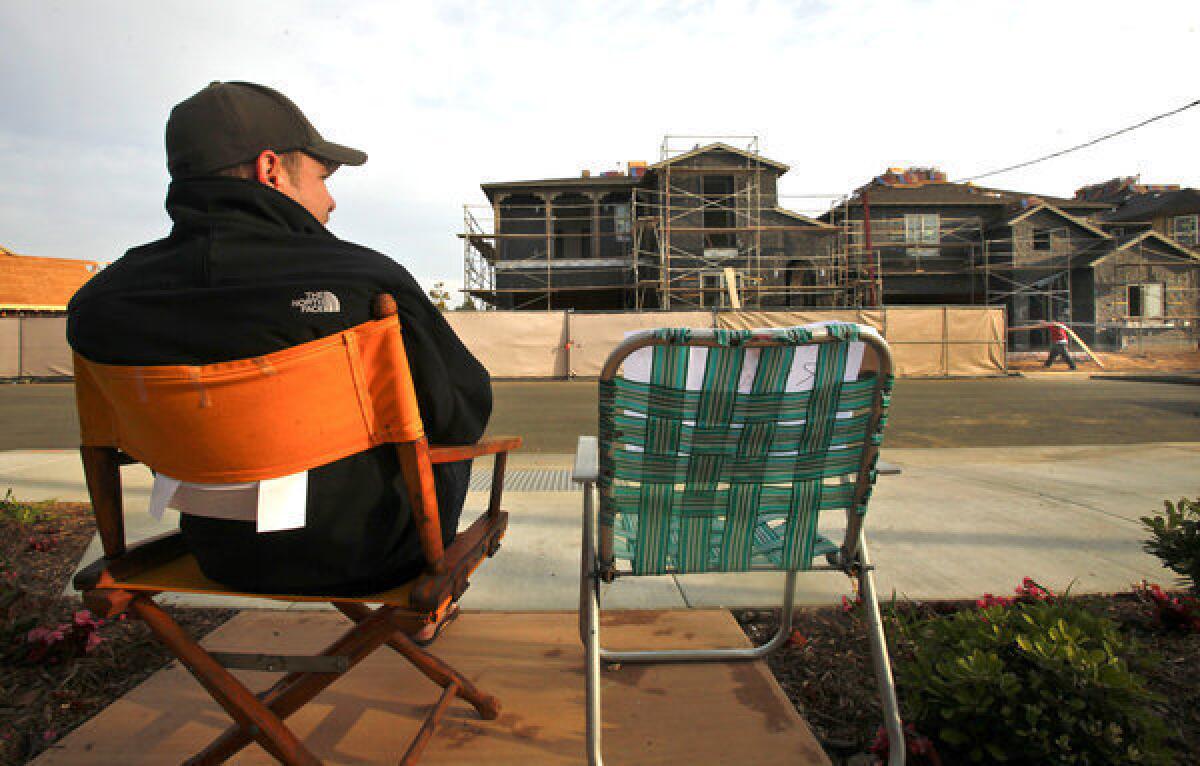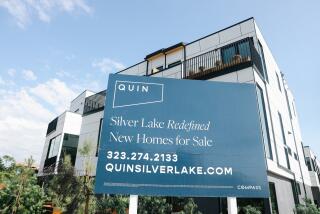Regulator plans to cut maximum amount for Freddie, Fannie mortgages

Regulators plan to lower the maximum size of mortgages that can be backed by Freddie Mac and Fannie Mae, which is now $417,000 in much of the country and $625,500 in expensive areas such as San Francisco, Los Angeles and Orange County.
The Federal Housing Finance Agency said the change would probably take effect at the end of the year.
“FHFA has been analyzing approaches for reducing Fannie Mae and Freddie Mac loan limits across the country, and any such change would be announced with adequate advance notice for implementation on Jan. 1,” the agency said in a statement Monday.
PHOTOS: Southern California’s most affordable ZIP codes
The FHFA could announce details about the lower limits by the end of this month, according to a report last week in the trade publication Inside Mortgage Finance.
It’s unclear what effect lowering the cap might have. Some trade groups representing mortgage bankers and real-estate brokers have argued that the housing markets still have not stabilized enough to begin lowering limits.
But the move would come as the market for jumbo mortgages -- those too big to be purchased or guaranteed by Fannie and Freddie -- has been booming.
Some big home lenders have been making a variety of jumbo loans and holding them as investments.
Immediately following the financial crisis, most lenders were requiring not only stellar credit but 30% or larger down payments. But Wells Fargo Home Mortgage, the nation’s largest mortgage lender, in July cut the down payments to as low as 15% in some cases, spokesman Tom Goyda said Monday.
What’s more, several financial firms have been successfully bundling jumbo loans into securities that are sold to investors without backing from Fannie, Freddie or other agencies supported by the federal government.
Such private-label mortgage bonds tumbled in value when the housing bubble burst. A robust private market is considered essential to help wean housing finance off its dependence on Freddie and Fannie, which became wards of the government after they nearly collapsed during the crisis.
The upper limit for Fannie and Freddie loans in high-priced areas was increased in 2008 to $729,750 to support the collapsing housing market. That limit was reduced to $625,500 in October 2011, although the $729,750 cap is still in place for loans insured by the Federal Housing Administration.
There is broad consensus in Washington that Fannie and Freddie must be reformed, although disagreements run deep on whether to eliminate them entirely and over how to set up a more limited government backstop for home loans.
The FHFA can lower the cap on Fannie and Freddie loans without congressional action. An overhaul of the giant home finance firms would require legislation.
Analyst Brian Gardner, senior vice president of Washington research at Keefe, Bruyette & Woods, noted Monday that Eric Cantor (R-Va.) sent out a memo Friday outlining the agenda for the House floor for the next two months.
Syria, the budget and the debt ceiling were the dominant issues. There was no proposed legislation dealing with Fannie, Freddie and other so-called government-sponsored entities, or GSEs, Gardner noted, “which means the House probably won’t consider a GSE bill by year end and shows the difficulty of passing a GSE bill.”
US 30 Year Mortgage Rate data by YCharts
ALSO:
FHA eases rules for some borrowers after foreclosures
Profits restored, Fannie Mae to pay $10.2 billion to Uncle Sam







